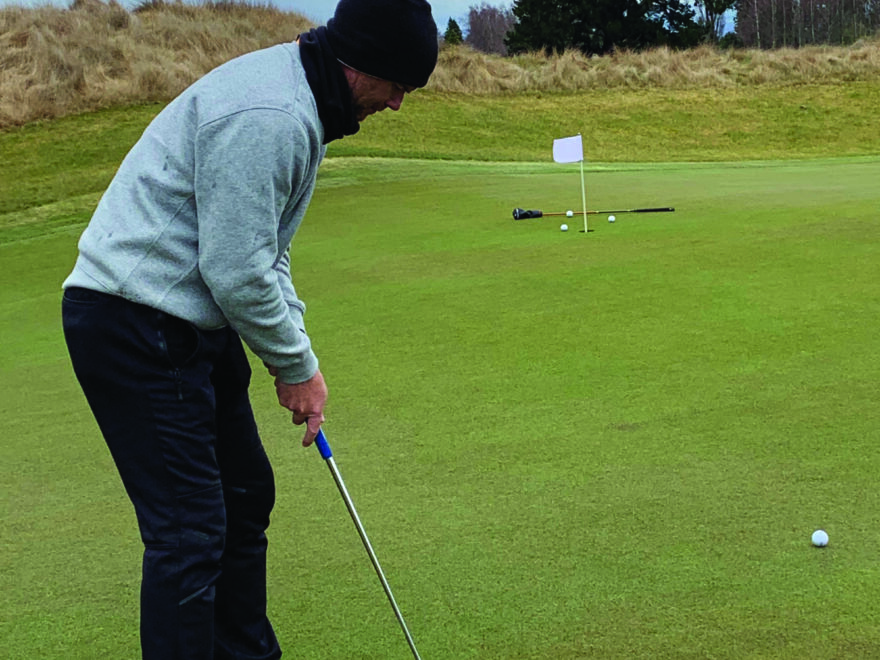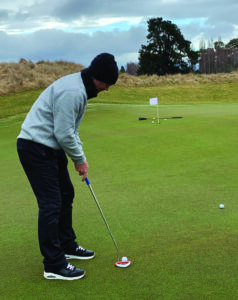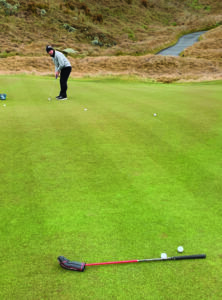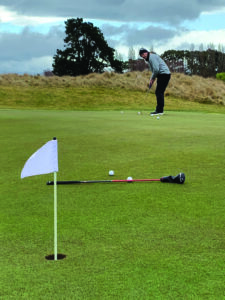We have all been guilty of arriving at the golf course too late to allow for a sufficient warm up. This significantly increases the pressure on oneself to perform from the ‘get-go’ and stop our score from ‘blowing-out’.
Typically, the first 4 or 5 holes will see us struggling to find the rhythm and timing that a ‘bucket of balls’ on the range beforehand would have given us. The last 3 hours of the round becomes a damage limitation exercise – a slog that isn’t particularly enjoyable – sound familiar?
Three putting is a ‘pet-hate’ of all golfers. Poor technique and miss-reading of lines are common factors as to why ‘three-putting’ occurs however, I see so many amateurs throwing shots away on the greens simply because their approach putting leaves them too much to do on their second putt. If your approach putting is poor, you may hole out a few times on your second putt but eventually the law of averages will catch up with you. Putting well builds confidence – putting poorly does the opposite. If you struggle with your putting over the opening holes then the likelihood is that you will endure a miserable day on the greens.
I don’t particularly like the term ‘lag-putt’ – to me it sounds negative however, from distance as well as trying to hole the putt facing you it is important to hit it at a pace that should it miss, you will not be facing more than 4 feet to ensure your two-putt.
The practice green will always be cut on the same day and at the same height as the greens on the course – the surface on the putting green will therefore mirror the speed of the 18 greens you are about to play.
I call the following practice drill “Dial it in” because it is about getting a ‘feel’ for the pace of the green surfaces prior to teeing off. I strongly encourage you all to spend five to ten minutes performing this drill before teeing-off. I am extremely confident that it will lower your score and will save you from throwing away strokes on the green especially over the first few holes.
- Head to the practice green and lay a club down on the green (pic 1)
- Drop some balls down randomly from 20 feet to 35 feet away from the club/shaft and quite simply start hitting putts to it. The idea is to roll the ball towards the club shaft with enough pace to reach it but not so much pace that it will jump over the shaft when it gets there.
- After doing this for a few minutes, find a hole on the practice green that offers you an uphill distance putt – lay the club down on the green as before but this time 2.5 feet beyond the hole (pic 2). Most amateurs leave uphill putts short so by placing the club beyond the hole it will help you to visualise a point beyond the hole and encourage you to apply enough pace to your ball to reach that point. Once again the idea is to have your ball reach the shaft if it misses the hole but not with so much momentum that it bounces over it. Focusing on a point 2.5 feet beyond the hole will likely see you apply enough pace on these uphill putts to reach the hole – thus giving them a chance of going in – how many times have you hit an uphill putt that is on line but finishes short?
- In pic 3, You will see that I have found myself a distance downhill putt and I have placed the shaft onto the green 3 feet short of the hole. Obviously this is going to prevent me from holing the putt on this practice drill but, the idea in this instance is to hit downhill putts to the club from random distances so that the ball reaches the shaft at a pace that is dying at that point – the downhill gradient would see it release down to ‘pin-high’ from there if the shaft were not in the way.
When you are out on the course you obviously can’t lie a club down on the green as a guideline to putt to – but, if you can visualise it being there it will help your ‘minds-eye’ to tune into the pace you should apply.
- For an uphill putt visualise the club/shaft lying on the ground beyond the hole – the more uphill the putt the further you should imagine that shaft lying on the green.
- On a downhill putt imagine the shaft being short of the hole – the greater the downhill gradient is should see you visualise the shaft being on the surface closer to you and shorter of the hole.
- On a flat putt – visualise the shaft being 2 feet beyond the hole and hitting your putt to come to rest against the shaft should it not drop in.
This drill will heighten your chances of holing distance putts but will also help you to leave shorter ‘secondary putts’ – I have seen firsthand how this exercise has helped my pupils to lower their scores.




